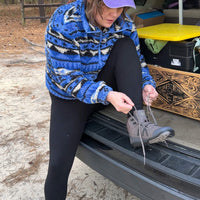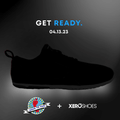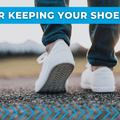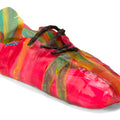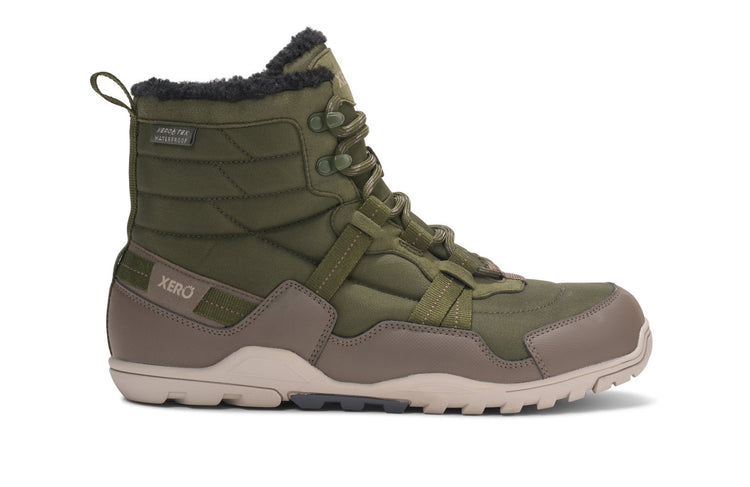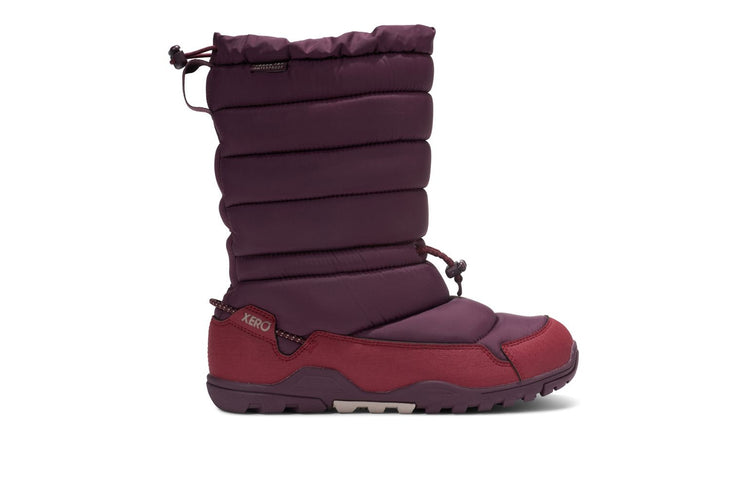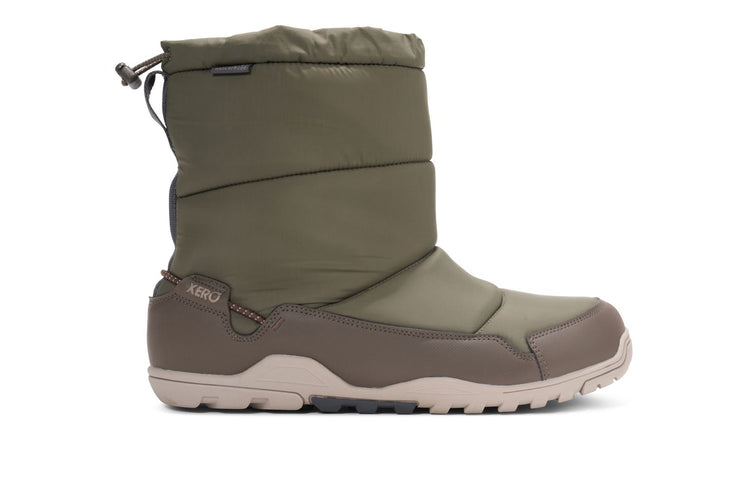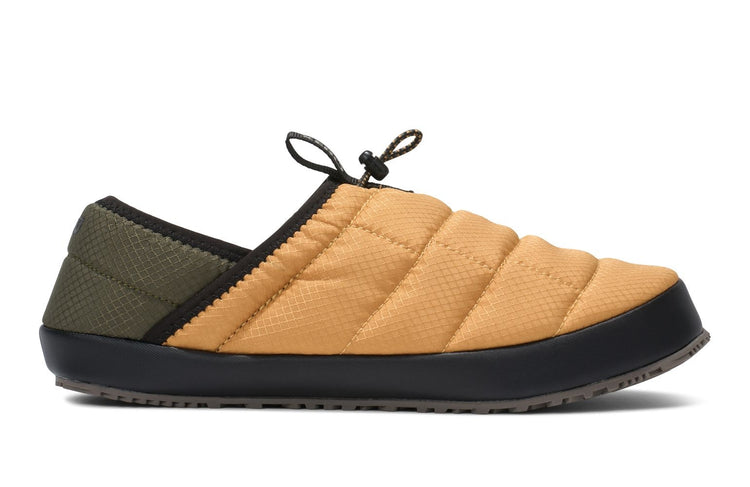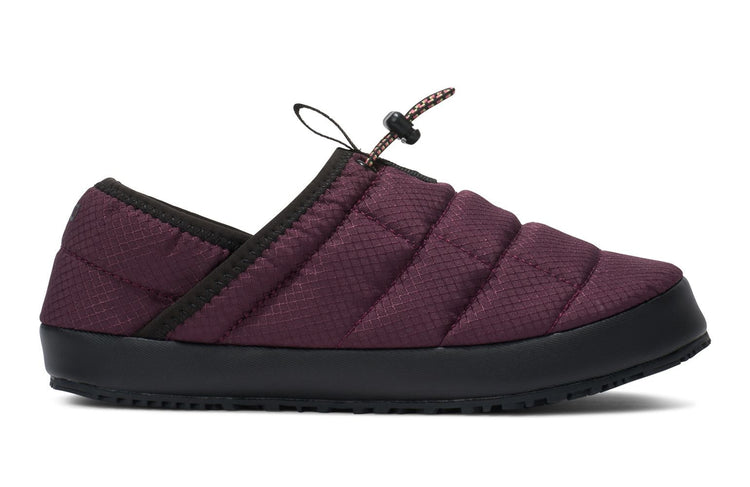
How to Be Lighter on Your Feet While Running
 Why You Want to “Run Lighter”
Why You Want to “Run Lighter”
Running lighter can have three significant effects on your running:
- Make running fun
- Become more efficient
- Help reduce injury risk
How do you run lighter?
It just takes a few minor form tweaks that you’ll discover below.

Use Sound to Know How “Light” You’re Running
The sound your feet make when they hit the ground tells you a lot about your running form.
If you hear thuds or slapping noises, you’re “running heavy.”
These sounds can indicate that you can improve your running form. Once you address your form, those sounds will not only go away, but you will improve your running efficiency.
So, as you explore the tips, below, use the sound of your feet as feedback – your built-in coach.
Tips for Running Lighter on Your Feet
What changes to your form can help you run lighter?
Here are the top tips runners use to improve their form and run lighter on their feet:
- Make sure your feet land under your body (avoid overstriding)
- You want to land forefoot or midfoot
- Let your heels touch the ground
- Place and lift your foot off the ground as you run
- Use cues to help avoid plopping your feet
- Keep your core engaged
- Pick up your cadence
- Run barefoot, or in minimalist shoes
Let’s dive into each tip.
1) Make sure your feet land “under your body”
Landing with your foot too far in front of your body means you’re overstriding.
It’s like putting on the brakes each time your foot touches the ground.
Why do runners need to overcome this habit?
Research shows that overstriding increases forces that go into your joints (rather than letting your muscles, tendons, and ligaments mitigate force). And many researchers believe it's the leading contributing factor for getting injured.
When you run, aim to have your feet land under your body, and not out in front.
To get a feel for this, we suggest exaggerating this by putting your feet “behind you” when you land. Of course, you won’t actually be able to do this, but if you try, it will highlight what overstriding feels like.
2) Land forefoot or midfoot
The type of footstrike is important for running lighter. Ideally, you want a forefoot or midfoot strike instead of a heel strike.
When combined with landing under your body, landing mid- or fore-strike means you're using your legs as springs, starting feet first. If you land on your heel, you've lost the first spring in your leg.
Do NOT reach out with your foot to land on your forefoot or midfoot - in fact, it’s the exact opposite of what you should be doing. Instead, land with your foot underneath your body (tip #1). When you do this, it's almost impossible not to land on your forefoot or midfoot.
3) Let your heels touch the ground
If you're not used to landing on the ball of your foot, it CAN make your calves and Achilles work harder.
Some people never let their heels touch the ground (even in shoes!), but there's no inherent benefit for doing that. In fact, if you don't let your heel come down as far as it feels right, you're not fully using your Achilles -- the best spring in your body -- to give you "free energy" when it un-stretches.
Once you land on the ball/midfoot, you can let your heel drop if it feels better to do that. It will feel better or worse depending on whether you’re:
- Going uphill or downhill
- On a flat surface or an uneven one
- Moving faster or slower
4) Place and lift your foot off the ground as you run
Many runners practically slam their foot onto the ground, especially if they’re overstriding.
Instead, think about “placing” your foot on the ground, like how you would place a dish on a table… gently.
If you land with your foot under your body (tip #1), and you land midfoot or forefoot (tip #2) this is much easier to do. In fact, it’s almost automatic.
To get your foot off the ground, most runners PUSH their toes into the ground. Not surprisingly, this is called “toe-ing off”.
And when you toe off, you’re using your calf more than necessary, wasting energy.
Instead, think about lifting your foot off the ground by lifting your knee, or pulling your foot off the ground (both of which, technically, happen by flexing your hip).
An image I like to use is stepping on a bee – you wouldn’t PUSH your foot to get off the bee, since that would drive the stinger further into your foot. You would reflexively use your hip flexor to LIFT your foot off the ground.
Both “placing” and “lifting” can keep you light on your feet.
5) Use a cue to help you “un-plop” your feet
This is actually similar to “placing” your foot but with a twist.
Many people “plop” their feet on the ground and leave them there for too long.
Ideally, to run lighter, you want your feet on the ground for as little time as possible.
The actual amount of time your feet are on the ground will change based on your running speed, but this tip will help you find the ideal time, no matter your speed.
Coaches use a few different cues to teach runners how to avoid plopping. It helps to pretend that…
- You’re running on hot coals or eggshells
- Your feet are wheels, and you want them to touch where the wheel meets the ground
- The ground is moving below you like a treadmill, and you want to move your feet at the same speed as the treadmill
- Think about lifting your feet off the ground before they even contact it
Whichever analogy you choose, you must find your own way of meeting the ground lighter with your foot and keeping it on the ground for as little time as possible.
Remember to listen to the sound you are making as your foot hits the ground and use that sound as a coach.
6) Keep your core engaged
Core engagement is important for light running. But it’s not just having strong abs.
When you run, think of your body as a spring. If you collapse in your midsection, you’re weakening the spring and making it less efficient and, therefore, making it harder to run.
Keeping your core engaged while running is about maintaining a gentle but consistent engagement of your abdominal muscles. Imagine lightly drawing your belly button towards your spine in a gentle, controlled manner that doesn't hinder your breathing. This should feel natural and sustainable throughout your run.
7) Pick up your cadence
Your running cadence refers to the total number of steps you take per minute.
Most people think there is a target cadence of 180 strides per minute. Contrary to popular belief, there’s no optimal running cadence. Some successful runners do more, some do less.
That said, most runners run with a cadence that’s too slow.
Moving your feet faster gives you less time to keep your feet on the ground. That’ll help you learn to place/lift, “un-plop” and avoid overstriding while you run.
So, on your next run, pick up the cadence just a bit without running faster.
It’ll feel odd at first because you’re doing something different. But once you get used to that new cadence, try picking it up a BIT more.
You’ll find a sweet spot that keeps you lighter on your feet without feeling awkward.
And, yes, if you’re inspired to run with a metronome, it could help ;-)

8) Run barefoot, or in minimalist shoes
Taking off your shoes and running barefoot can improve your technique. Of course, this isn’t always possible, so wearing a minimalist shoe can help.
You don’t need to switch to a barefoot shoe, or barefoot running full time, but doing some barefoot running can highlight some form flaws that you would never notice in a “normal” shoe.
In short, running barefoot with good form feels good, and bad form feels bad.
If you just explore the tips above while running barefoot, you may find that last little “hitch in your giddyup”.
If you want to run barefoot, use these tips:
- Run on a smooth, hard surface. This will give you the most feedback. A sidewalk or bike path is good. Grass is not great because it’s sort of like taking the padding from a shoe and covering the world with it. Plus, the ground is rarely even, and you can’t see things you might not want to step on… or in.
- Start SMALL. Let your first barefoot run be 20-30 seconds. Yes, SECONDS. Then, the next day, see how you feel. If you’re sore like you just went to the gym, that’s good. Rest and repeat until you enjoy those 20-30 seconds… then add 10 seconds every time you feel ready
If barefoot isn’t for you here’s how barefoot shoes can help improve running form:
- Barefoot shoes have a wider toe box that allows toes to splay, and move naturally, which can improve posture and balance. Plus, it feels great to not have your toes all squished.
- Truly barefoot-style shoes have a non-elevated heel (a “zero-drop”) which naturally encourages runners to land more on their midfoot or forefoot rather than the heel. Normal shoes with a “drop” will shift your center of gravity forward, and adjusting to that can put strain on your back, knees, ankles, and hips.
- Minimalist and barefoot shoes are lightweight shoes that do not have unnecessary padding. They let you use your muscles, ligaments, and tendons as natural shock absorbers and springs (better than any man-made foam!) They mimic the feeling of running completely barefoot while giving you a layer of protection.
- Barefoot shoes don’t “support” your arch which, like supporting any joint, makes the surrounding tissues weaker. Research shows that merely walking in a barefoot shoe builds foot strength as much as doing a foot exercise program. So barefoot shoes let you build strength in your feet and legs naturally the more you wear them. When your feet and legs are stronger, you can run longer distances without feeling fatigued.
Even if you run in “normal” shoes, barefoot shoes are great for active recovery and that strength-building I just mentioned. So slip them on once you’re done with your “normies.”
The content of this post does not constitute and is not intended to be a substitute for professional medical advice, diagnosis or treatment. Always seek the advice of a physician or other qualified health provider with any questions or concerns you may have about your health or a medical condition.

